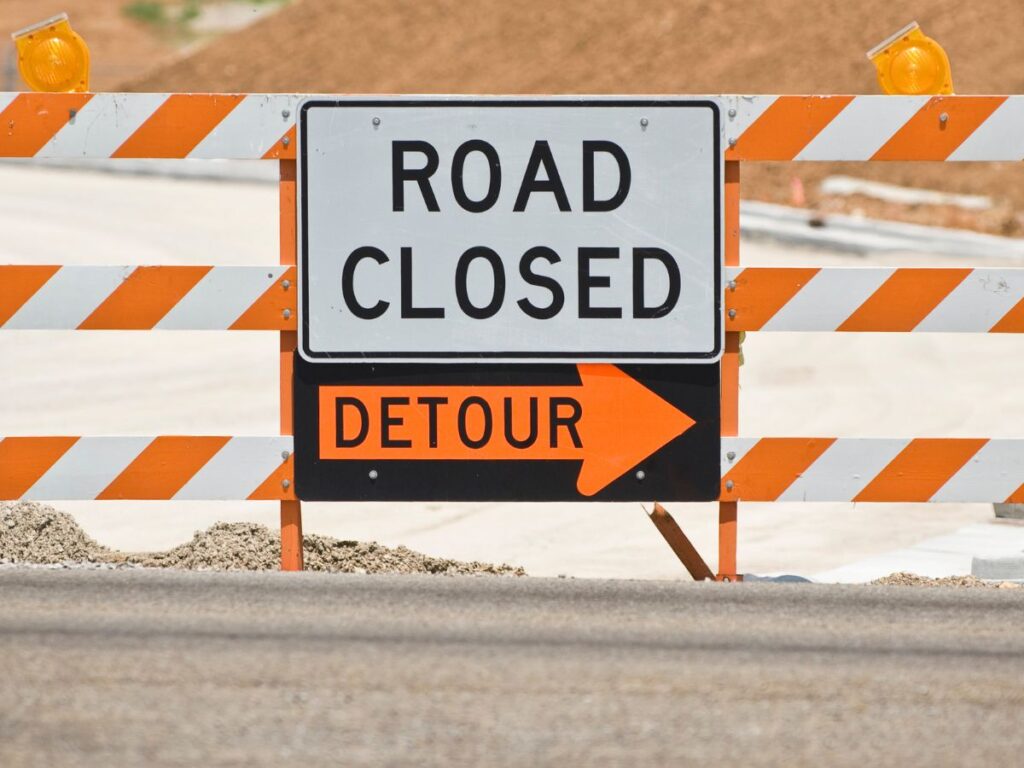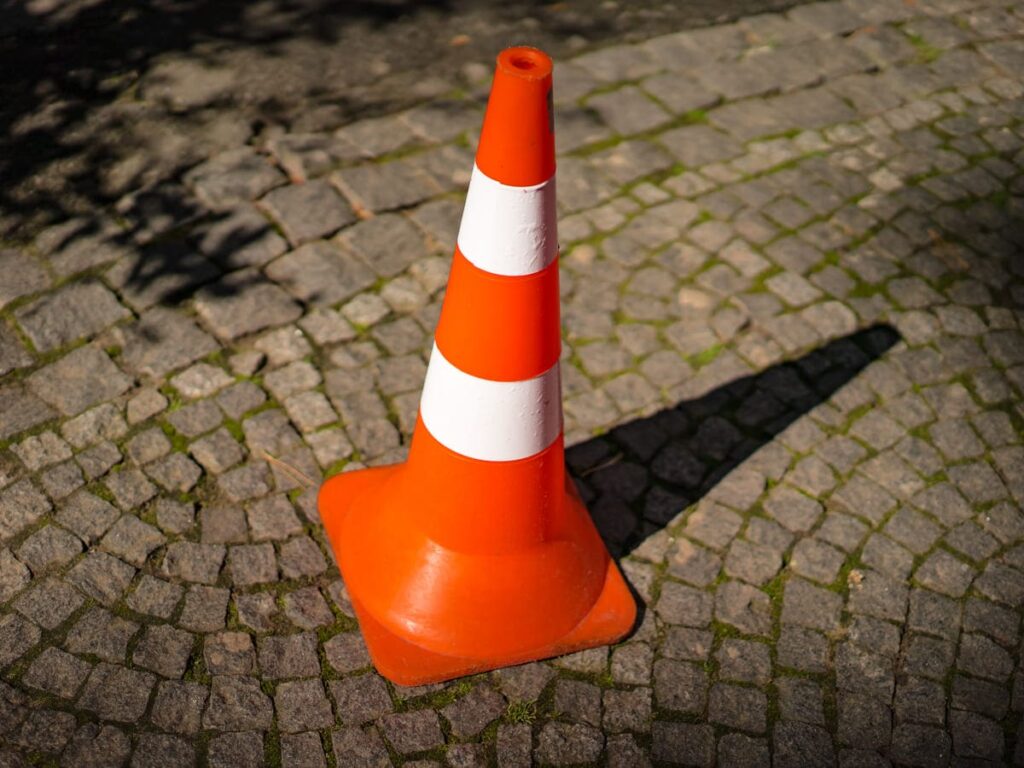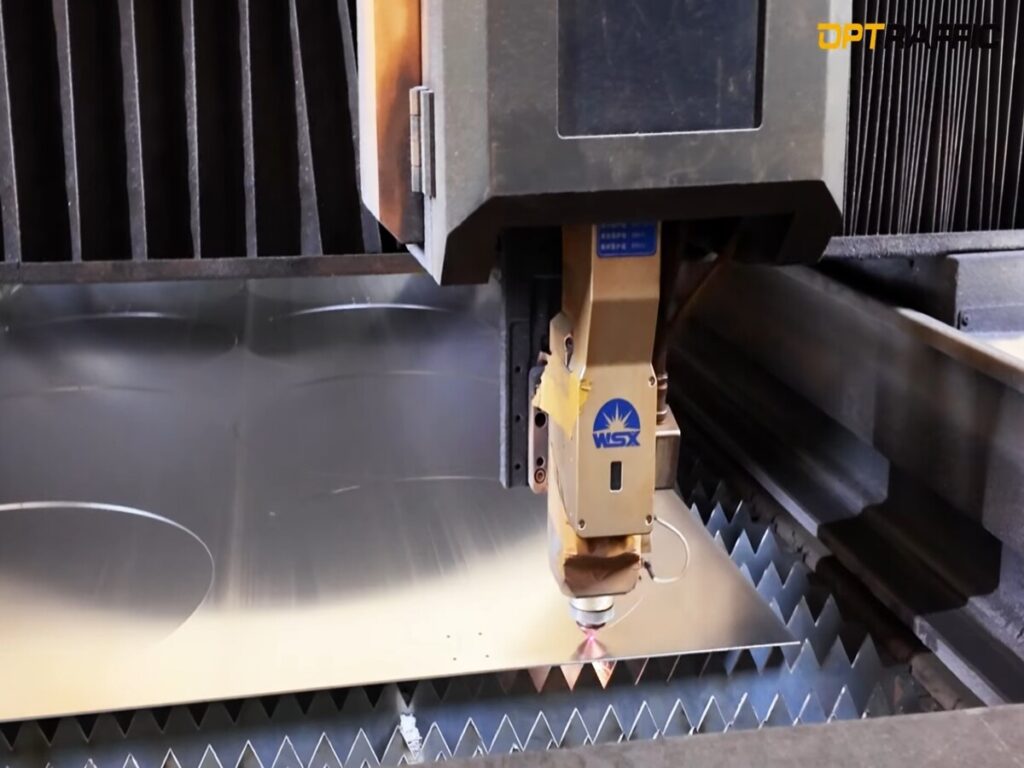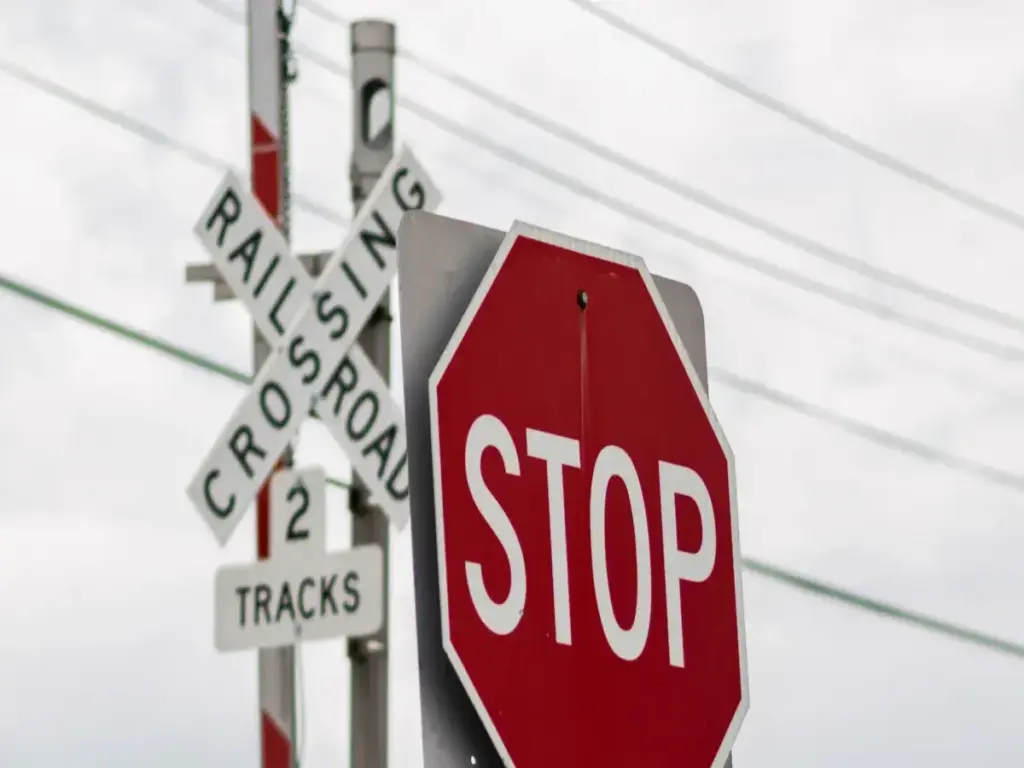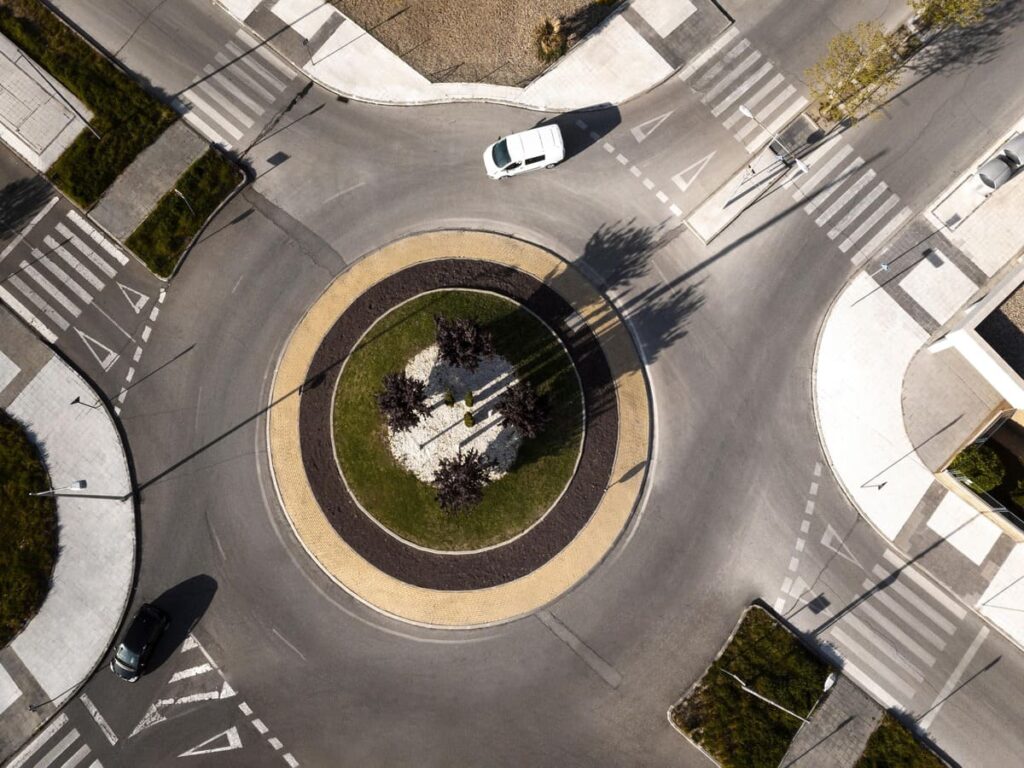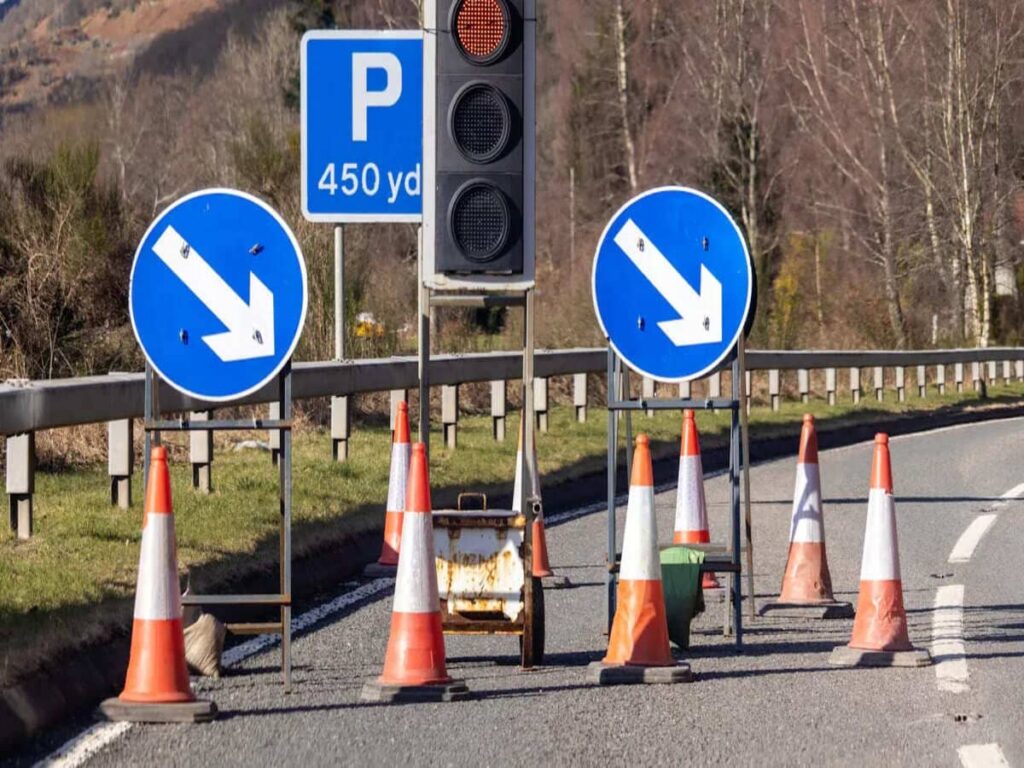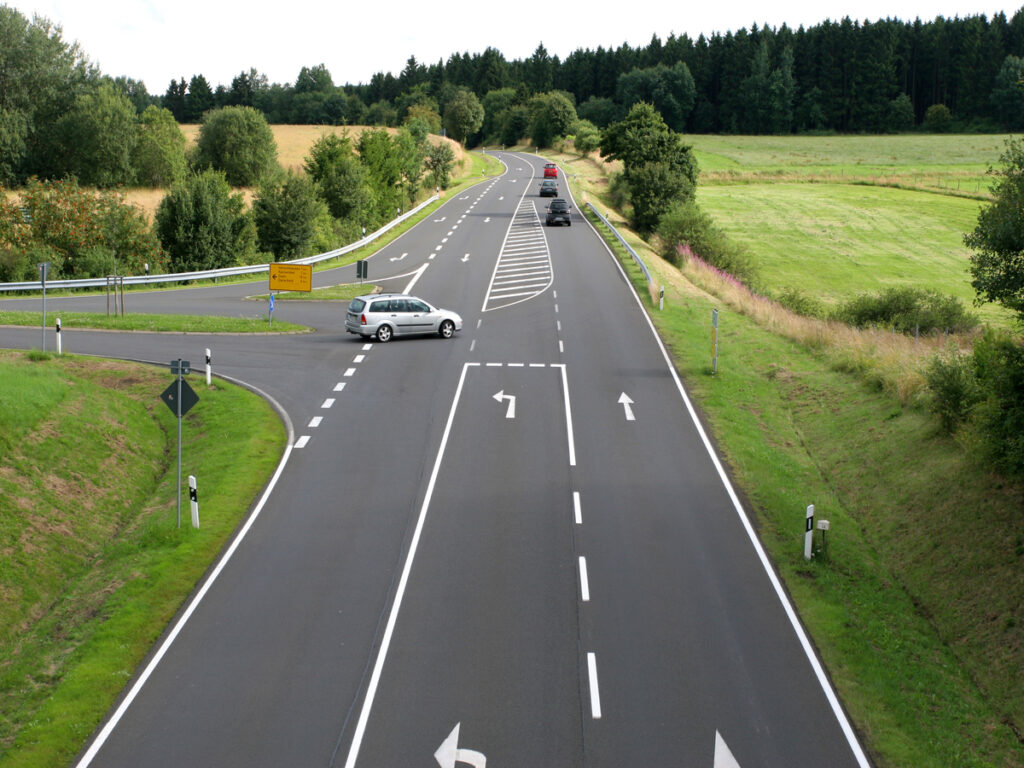
忙しい4車線の道をより安全な3車線の道に変えることを想像してみてください. この変更, 道路ダイエットと呼ばれます, 2つの外部レーンを交換します. 左折と2つの旅行車線にセンターレーンを追加します. 特別なツール, チャネル化デバイスと呼ばれます, この変更を機能させるのに役立ちます. これらのツールは車と独立した車線を導き、全員を安全に保つ. ドライバー, バイカー, そして、歩行者は新しい道を簡単に使用できます. 道路ダイエットには大きな利点があります. 例えば, アテネクラーク郡とオーランドは、それらを使用した後、クラッシュが少なくなりました. クラッシュが立ち寄った 52.9% アテネクラークと 34% オーランドで. 道路ダイエットも交通量を減らし、自転車や歩行者のためのスペースを追加します. これにより、誰にとっても道路が良くなります.
で オプトラフィック, より安全なサポート, 耐久性を提供することにより、より効率的な道路 デバイスをチャネル化します 道路ダイエットなどのプロジェクト向けに設計されています, 車線シフト, 歩行者に優しい再設計. 私たちのソリューションは、トラフィックをスムーズに導くのに役立ちます, クラッシュリスクを減らします, そして、道路上のすべての人のためにより安全なスペースを作成します.
都市道路プロジェクトの交通安全装置の詳細については、次のサイトに適したセットアップを確認するには、お問い合わせください。.
キーテイクアウト
- 道路ダイエットは忙しい4車線の道路をより安全な3車線の道路に変える. これはドライバーに役立ちます, バイカー, そして、歩行者は安全なままです.
- コーンのようなツール, 投稿, 塗装ラインはトラフィックをガイドします. 彼らは新しいレーンのセットアップを示し、混乱を減らしてクラッシュします.
- 道路ダイエットは、クラッシュを大幅に削減できます. 研究では、最大の低下が示されています 52.9% いくつかの場所で.
- 歩行者の避難所は、歩行者のために交差をより安全にします. 彼らは、忙しい道路を渡るために人々に安全な場所を与えます.
- ツールを良好な状態に保つことは重要です. これにより、道路は誰にとっても安全で明確な状態を保つのに役立ちます.
道路ダイエットの概要
道路ダイエットとは何ですか?
a 道路ダイエット 安全性を向上させるために道路がどのように設定されているかを変更します. 4車線の道路を3車線の道路に変えます. 新しいデザインには、運転用の2つのレーンと左折用のレーンがあります. このセットアップにより、交差点は誰にとっても混乱を軽減し、より安全にします. 道路ダイエットは、しばしば自転車レーンや歩道を追加します. これらの変更により、あらゆる種類の旅行者にとって道路が良くなります.
道路ダイエットの目的と目標
道路ダイエットは、道路をより安全で使いやすくすることを目指しています. 車線が少ないほどクラッシュが少なくなります. より遅い車は、歩行者とバイカーを保護するのに役立ちます. 目標は、すべての人のために働く通りを作ることです, ドライバーだけではありません. 道路ダイエットはまた、交通の流れをよりシンプルで安全にすることで交差点を改善します.
交通安全と交通の流れに対する重要な利点
道路ダイエットは多くの点で安全性と交通の流れを改善します. 4車線を3つに変更すると、クラッシュを19〜47%削減できます. これには、若いドライバーと年上のドライバーのための事故が少なくなります. 新しいデザインは、速度の違いを減らすことにより、トラフィックをより滑らかにし、より安全にします. より良い交差点は、歩行者とバイカーがより簡単に動くのに役立ちます. ラウンドアバウトや安全な交差点などの機能により、交差点がさらに使いやすくなります.
チャネル化デバイスの種類
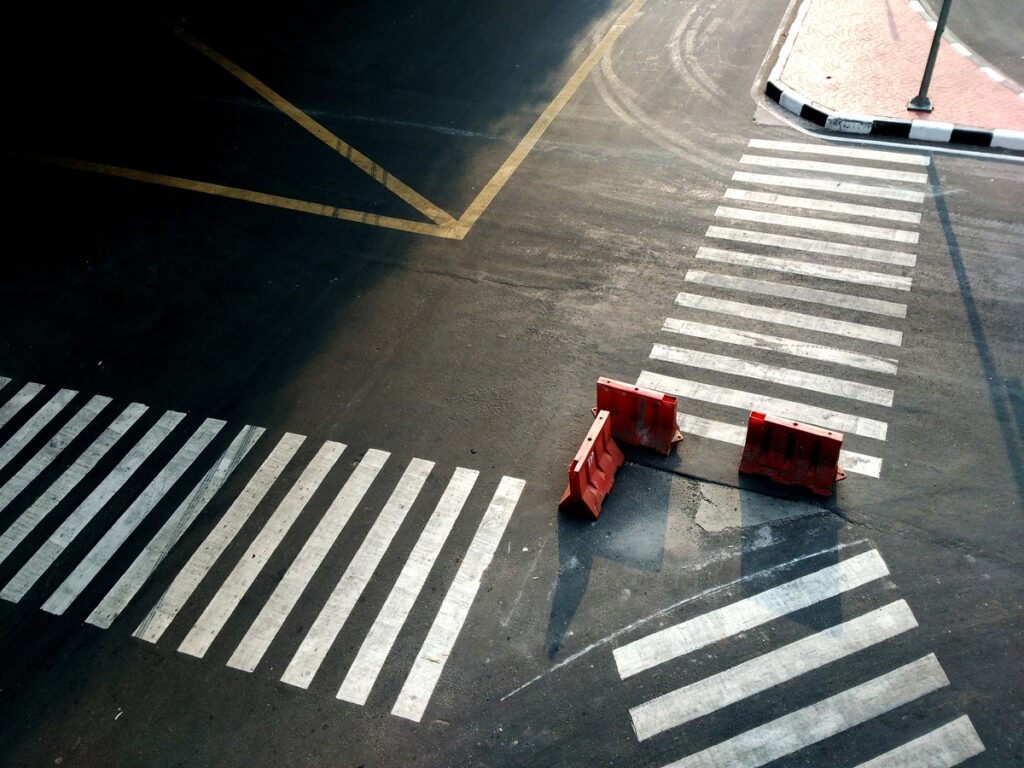
チャネル化デバイスは、交通を導き、道路を安全に保つために重要です. 彼らは人々が道路ダイエット中に新しい車線のセットアップを理解するのを助けます. 以下は、道路ダイエットで使用されるチャネル化デバイスの一般的なタイプです.
交通コーンとドラム
トラフィックコーン そして 安全ドラムSは簡単に見つけることができ、広く使用されています. 建設や一時的な道路の変更中によく見えることがよくあります. 彼らは軽いです, ポータブル, セットアップが簡単です. これらのツールは、永続的にする前に新しいレーンデザインをテストするのに最適です.
- トラフィックコーン: 明るいオレンジ色のコーンは見やすいです. 彼らは車や人々が仕事ゾーンや車線の変化の周りに安全に移動するのを助けます.
- ドラム: ドラムはコーンよりも大きく、倒すのが難しい. 彼らは忙しいエリアや強風のある場所でうまく機能します.
ヒント: 交通コーンとドラムは、短期の道路ダイエットプロジェクトのための手頃な価格のオプションです.
Delineatorの投稿と反射ボラード
Delineatorの投稿と反射ボラードは、半多数のツールです. レーンのエッジをマークし、可視性を向上させます, 特に夜または薄暗い光で. これらのデバイスは、多くの場合、道路ダイエットで狭められた車線に沿って配置されます.
- Delineatorの投稿: 柔軟なポストが車に当たった場合に曲がります, 損傷の減少. 彼らはしばしば自転車レーンを自動車レーンから分離するために使用されます.
- 反射ボラード: ボラードは頑丈で、視認性を向上させるための反射部分があります. それらは通常、交差点または交差点に配置されます.
これらのツールは、ドライバー間の明確な境界を作成するのに役立ちます, バイカー, そして歩行者.
ジャージーの障壁と水に満ちた障壁
ジャージーの障壁 and water-filled barriers offer more protection than other devices. They are used in fast-moving areas or key spots like crossings and intersections.
- ジャージーの障壁: Heavy barriers made of concrete or plastic. They stop cars from entering restricted areas.
- 水に満ちた障壁: These are light when empty but stable when filled with water. They are easier to move and set up than Jersey barriers.
注記: These barriers guide traffic and protect walkers and bikers from cars in risky areas.
Pavement markings and painted channelizers.
Pavement markings and painted channelizers are important for road diets. They give clear visual cues to help drivers, バイカー, and walkers use the road safely. These markings show lane edges, center turn lanes, そして自転車レーン.
Painted lines are useful because they show changes without barriers. 例えば, they can mark where a lane ends or a bike lane starts. Arrows and symbols on the road guide cars at intersections or turns. These markings make traffic flow better and reduce confusion.
Painted channelizers are great for testing new road designs. They let you try out lane setups before adding permanent features. 例えば, a painted buffer zone between bike and car lanes makes biking safer. This temporary fix helps check if the design works well.
ヒント: Use bright colors and reflective paint for better visibility at night or in bad weather.
Pavement markings work well with other tools like posts or bollards. 一緒に, they make the new lane layout clearer. This combo improves safety and helps everyone understand the road changes.
Pedestrian refuge islands.
Pedestrian refuge islands make crossing roads safer during road diets. These raised areas in the middle of the road give walkers a safe spot to pause while crossing. They are helpful on wide or busy streets.
The islands shorten the crossing distance for walkers. Instead of crossing all lanes at once, people can focus on one direction at a time. This design lowers accident risks and makes crossing easier for everyone.
These islands also slow down traffic. By making the road look narrower, they encourage drivers to drive slower. Slower speeds keep bikers and walkers safer. Many islands have features like reflective signs or textured surfaces to improve safety even more.
注記: Place the island near the center turn lane for smoother traffic flow and pedestrian safety.
Pedestrian refuge islands work well with other road diet tools. 例えば, they pair nicely with painted channelizers to create a safer road design. 一緒に, これらの機能により、すべてのユーザーにとって道路が向上します.
道路ダイエットにおけるチャネル化デバイスの役割
道路ダイエットの建設中の一時的な交通規制
一時的な交通規制は、道路ダイエット作業中に非常に重要です. コーンのようなツール, ドラム, 障壁は車を安全に導きます. 混乱を避けるために車線の変化と迂回路をはっきりと示しています. これらのデバイスは、作業ゾーンの事故を防ぐのに役立ちます.
研究は、不明確な建設エリアでcrash落がより頻繁に起こることを示しています. 例えば, NTSBは、道路が2車線に切り替わると致命的な衝突が上昇することを発見しました. Hawkins et al. また、多くのドライバーがクロスオーバーサインを誤解していることがわかりました. これは、より良いレーンマーカーの必要性を示しています.
| 研究/ソース | 調査結果 | 結論 |
|---|---|---|
| ntsb (1992) | 建設中に致命的なクラッシュが上昇します. | 交通分離は非常に重要です. |
| Hawkins et al. (1992) | ドライバーの半数は兆候を誤解しました. | より良い車線マーカーが必要です. |
| パンとユ (1981) | ほとんどのクラッシュは、移行ゾーンで発生します. | 優れたレーンマーカーが役立ちます. |
| グラハム等. (1977) | 夜間のクラッシュは建設ゾーンの増加です. | 明るい車線マーカーは重要です. |
| NemethとRathi (1983) | クラッシュの半分以上が固定オブジェクトにヒットします. | 手入れの行き届いたツールが重要です. |
反射的なコーンとドラムは、ドライバーが夜または悪天候で車線を見るのに役立ちます. これらのツールにより、作業ゾーンはドライバーとワーカーにとってより安全になります.
新しいレーン構成を強化するための永続的または半多数の配置
建設が終了した後, 恒久的なツールは、新しい道路の設計を明確に保ちます. 投稿, ボラード, 塗装線はレーンをマークし、トラフィックをガイドします. これらのツールはドライバーに役立ちます, バイカー, そして、歩行者は新しいレイアウトを理解しています.
反射的なボラードは、交差点を見やすくします. They stop cars from entering restricted areas. 塗装線はボラードと連携して車線のエッジを見せて車線を回します. 一緒に, 彼らは道路をより安全で使いやすくします.
必要に応じて、半多数のツールを移動できます. 水に満ちた障壁, 例えば, イベントや季節にシフトすることができます. この柔軟性は、さまざまな状況で道路ダイエットを効果的に保ちます.
マルチモーダルの安全性と「完全な通り」の目標をサポートします
チャネル化ツールは、路上のすべての人の安全性を向上させます. 彼らは車の車線を分離します, バイク, そして歩行者. これにより、すべてのユーザーにとってロードフェアになります.
歩行者の避難所は良い例です. これらの隆起した領域は、交差をより短く、より安全にします. 彼らはまた、道路をより狭く見せることで車を遅くします.
研究は、これらのツールを使用した道路ダイエットがクラッシュを減らすことを示しています. 衝突率が低下しました 6% に 52.9% さまざまな場所で. 以下のチャートは、研究からの衝突削減を示しています:
自転車レーンもこれらのツールの恩恵を受けます. ポストとペイントされたバッファーは、自転車レーンから自転車レーンを分離します. これにより、競合が減少し、サイクリングがより安全になります. これらのツールを使用すると、誰にとっても安全な通りが作成されます.
道路ダイエットにおけるデバイスをチャネル化する利点
運転手の交通安全性が向上しました, サイクリスト, と歩行者
チャネル化されたデバイスは、すべての人にとって道路をより安全にします. 彼らは車を導くのに役立ちます, バイク, 新しいレーンのセットアップを歩きます. 避難島や塗装された横断歩道などの歩行者ツールは、交差点を簡単にします. これらの機能は交差距離を短くし、ドライバーが歩行者をより早く見るのに役立ちます. これにより、事故の可能性が低下します.
自転車ツール, 投稿や塗装されたバッファーのように, 自転車レーンを自動車レーンとは別に保管してください. これにより、ドライバーとバイカーの間の対立が減少します. 歩行者のビーコンのような安全ツールは、交差する人々についてドライバーに警告します. これらのデバイスを一緒に使用すると、すべてのユーザーにとって道路が安全になります.
トラフィックの落ち着きと車両速度の低下
チャネル化デバイスはトラフィックを遅くし、道路をより安全にします. 狭い車線, ボラードまたは塗装線によって作成されました, より遅い運転を奨励します. より遅い車は、ドライバーに反応する時間を増やします, 歩行者とバイカーを保護します. 避難所の島々は、道路をより狭く見せることでも役立ちます.
研究では、速度が遅くなることにより、クラッシュが少なく、重傷が少ないことが示されています. これらのツールは、誰にとってもより安全な通りを作成します, ドライバーを含む, バイカー, そして歩行者.
ドライバーの可視性とガイダンスの向上
安全な視認性は安全な運転の鍵です. 反射ボラードのようなツール, 舗装マーキング, ビーコンは、ドライバーがよりよく見えるのを助けます. 彼らは新しい車線のセットアップを通して車を導き、混乱を減らす. これにより、クラッシュのリスクが低下します.
盛り上がった横断歩道と避難島は歩行者を見つけやすくします. 明るい塗料と反射マーカーは、バイカーをドライバーに見えるようにします. これらのツールは協力して道路をより安全で使いやすくするために動作します.
実装の考慮事項
間隔と可視性のためのMUTCDルールに従います
使用 MUTCDルール 確かにします デバイスをチャネル化します うまく機能します. 適切な間隔と可視性は、すべての条件で安全のための鍵です. 頻繁にデバイスを確認して、それらが目に見えるようにしてください, 特に夜または悪天候で. 反射材料は、夜間の運転に非常に重要です. 彼らは、ドライバーが車線のエッジをはっきりと見るのを助けます.
一部の州, メリーランドのように, これらのツールの間隔を立てるためのより厳格なルールがあります. これらのルールにより、作業ゾーンがより安全で、ドライバーにとって混乱を伴わない. これらのガイドラインに従って、誰にとっても安全な道路を作るのに役立ちます.
ヒント: 耐久性のある素材を選択して、反射機能をより長く動作させます.
舗装標識を信号機のタイミングと一致させる
道路ダイエットを始めるとき, 舗装標識を信号機のタイミングで一致させます. 舗装マーキングは、新しい車線を示しています, 軽いタイミングでトラフィックがスムーズに動き続けます. 一緒に, ジャムを防ぎ、安全性を向上させます.
例えば, 新しい標識には、矢印または自転車レーンのシンボルが含まれる場合があります. 光のタイミングを調整すると、歩行者が車を回転させるための待ち時間を超えるのに役立ちます. これらの更新により、ロードダイエットは誰にとっても簡単で安全になります.
注記: 問題を避けるために静かな時間に新しい光のタイミングをテストする.
一時的および永続的なセットアップを同様に保つ
一時的なツール, 交通安全コーンのように, 建設中のトラフィックをガイドします. 恒久的なツール, ボラードや塗装線のように, 最終的な道路デザインを表示します. どちらも混乱を避けるために似ているはずです.
一時的なセットアップでは、最終的なデザインを可能な限りコピーする必要があります. 例えば, 最終的な道路に自転車レーンがある場合, コーンを使用して、建設中にそれらをマークします. これは、誰もが変化に慣れるのに役立ちます.
半多数のツール, 水で満たされた障壁のように, イベントや季節に移動できます. 物事を一貫性に保つと、一時的なものから永続的なスムーズに切り替えます.
チャネル化デバイスを使用した道路ダイエットのケーススタディ
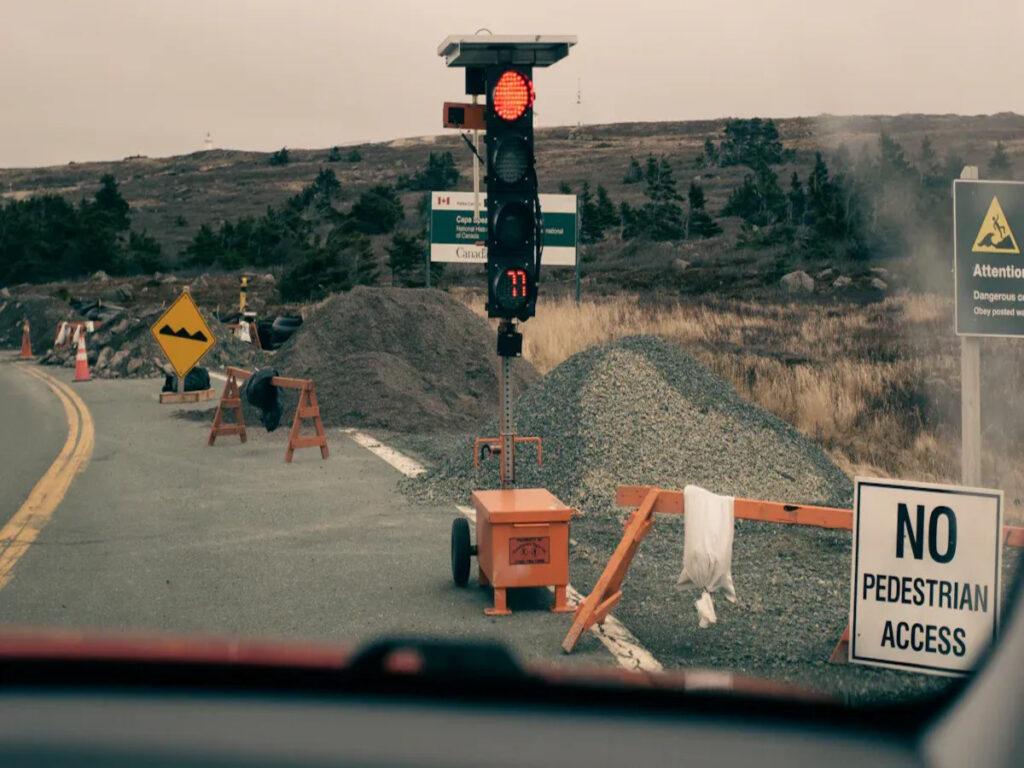
ホノルル, こんにちは: コーンと塗装されたチャネルライザーでのテスト
ホノルルで, プランナーは、コーンと塗装されたチャネルライザーを使用して道路ダイエットをテストしました. この一時的なセットアップは、彼らが新しい3車線のデザインをチェックするのに役立ちました. コーンは、旅行車線の端を示しました. 塗装されたチャネルライザーは、中央のターンレーンをマークしました. これらのツールは、ドライバーが新しいレイアウトを理解するのに役立ちました. また、交差点での混乱を減らしました. テスト中, 交通の流れと安全性が大幅に向上しました. 変更を永続的にした後、クラッシュは19〜47%減少しました. このテストは、一時的なツールが試用中にトラフィックをうまく導く方法を示しました.
ヒント: 恒久的な変更の前にコーンなどの一時的なツールを使用して問題を見つける.
ミシガン州とフロリダ: DelineatorsとRefuge Islandsの追加
ミシガン州とフロリダ州は、すべての人の安全性を向上させるために道路ダイエットを使用しました. どちらの州でも、自転車レーンを自動車レーンから分離するために描写を追加しました. これらの柔軟な投稿により、自転車レーンはより目立ち、より安全になりました. 歩行者の避難所は、忙しい交差点に置かれました. これらの隆起した斑点は、歩行者に交差しながら停止するのに安全な場所を与えました. これにより、クラッシュリスクが低下しました. ミシガン州は、crash落が立ち寄るのを見ました 35%, フロリダには 40% 削減. これらの例は、物理的および視覚的なツールがすべてのユーザーにとって道路をより安全にする方法を示しています.
すべての旅行者のクラッシュ削減とより良い安全性
道路ダイエットは、クラッシュを減らし、道路をより安全にするのに役立ちます. 狭いレーンと避難島のような機能が車を遅くする. これにより、歩行者のためのより安全なスペースが作成されます, バイカー, ドライバー. 研究では、衝突の減少が示されています 19% オーバー 50% 多くの都市で. 交差点は使いやすくなります, そして、すべての旅行者はより安全だと感じています. 適切なチャネル化デバイスを使用すると、危険な道路をより安全に変えることができます, 誰にとってもより効率的なスペース.
道路後のメンテナンスと管理
反射率と安定性の定期的なチェック
チェック デバイスをチャネル化します 多くの場合、それらがうまく機能することを確認します. 反射部分は時間とともにフェードする可能性があります, 特に悪天候や忙しい地域で. フェードされた反射器は、夜に見るのが難しいです, 事故を引き起こす可能性があります. 安定性も重要です. ボラードやポストは、風から移動または緩む可能性があります, クラッシュ, または着用します.
検査のチェックリストを作成します. 亀裂を探します, 色あせた色, またはゆるい部品. 壊れたデバイスをすぐに交換して、道路を安全に保ちます. 視界を確認するために夜間または雨の中で反射剤をテストする. それらが失敗した場合, 新しいコーティングを追加するか、デバイスを交換します.
ヒント: 問題を早期に修正し、それらを動作させ続けるために、3か月ごとにデバイスを検査します.
季節や特別なイベントの調整
冬の間、道路ダイエットは課題に直面しています, 雨, または大きなイベント. 除雪車はポストを損傷する可能性があります, 雨は塗料を洗い流すことができます. パレードやフェスティバルには、一時的な車線の変更が必要になる場合があります.
柔軟なツールを使用して準備します. 水で満たされた障壁は、短期セットアップのために簡単に移動できます. コーンとドラムは、迅速な調整に最適です. 冬に, 雪と氷を扱う強力な素材を使用してください. 雨天のために, より長く続く反射塗料を選びます.
注記: イベント中のトラフィックをスムーズに管理するために地元の役人と事前に計画する.
半多数ツールの長期ケア
交通局や避難島のような半万人のツールには長期的な維持費が必要です. 時間とともに, 彼らは摩耗したり、うまく機能するのをやめることができます. 追跡システムを使用して、その状態を監視します, 計画交換, コストを管理します.
長持ちするツールには、耐久性のある材料を選択してください. 強力なポストとボラードは、より少ない交換が必要です. 避難所や不均一な斑点を避難島にチェックし、歩行者を安全に保つためにそれらを修正します.
ヒント: デジタルツールを使用して、修理とスケジュールを追跡します. これは、あなたの道路ダイエットを何年も効果的に保つのに役立ちます.
将来の見通し: 道路ダイエットコリドーのスマートチャネル化
可変メッセージチャネライザーなどの新しいツール
テクノロジーは、道路上の交通がどのように動くかを変えています. 可変メッセージチャネルライザーは、道路ダイエットがよりよく機能するのに役立つ新しいツールです. これらのデバイスは明るいLEDスクリーンを使用してドライバーにリアルタイムの更新を表示します. 例えば, 彼らは車を導くために矢を表示したり、車線の閉鎖について警告するかもしれません. 彼らはさまざまな状況に適応します, 建設や緊急事態のように, トラフィックをスムーズに流し続けるため.
これらのツールは、交差点をより安全にします. 彼らは、車線が閉じられたときに交差する人についてドライバーに警告したり、彼らに伝えることができます. 明確な指示を与えることによって, 可変メッセージチャイナライザーは混乱を軽減し、誰もが安全を維持するのを助けます.
よりスマートなトラフィックコントロールにセンサーを使用します
センサーシステムは、道路のもう1つのクールな新しいアイデアです. これらのセンサーは、トラフィックに関するデータを収集します, 速度, そして歩行者. 道路は、何が起こっているかに一致するようにリアルタイムで調整できます. 例えば, トラフィックがライトで蓄積した場合, センサーは、待機を減らすために信号を変更できます.
道路ダイエット, センサーでは、レーンがよく使用されていることを確認してください. 彼らはすべての旅行者を維持するのに役立ちます, 歩行者を含む, 安全. センサーも問題のスポットを見つけるので、修正がより速く起こる可能性があります.
交通のニーズに基づいて変化する道路
道路ダイエットの未来は柔軟性です. 交通に応じてレイアウトを変更する道を想像してください. 忙しい時期, より多くの車線が開くことができます. 静かな時に, 自転車レーンまたは横断歩道は、より多くのスペースを得ることができます. これを可能にします.
レーンをリアルタイムで交換すると、道路がより安全で混雑が少なくなります. あらゆる種類の旅行者に役立ちます, ドライバーのように, バイカー, そして歩行者. テクノロジーが改善するにつれて, これらの適応可能な道路ダイエットは、誰にとってもより良い通りを作ります.
チャネル化デバイスは、道路ダイエットをうまく機能させるための鍵です. 彼らは直接的なトラフィックに役立ちます, 歩行者を安全に保ちます, 道路の使用バランス. これらのツールには大きな利点があります. クラッシュ率は低下します, そして、避難所の島々は交差をより安全にします. 下の表は、これらのツールがどのように役立つかを示しています:
| 利点 | 証拠 |
|---|---|
| クラッシュが少ない | クラッシュは19〜47%減少します |
| 歩行者にとってはより安全です | 避難所の島々は、ウォーカーのcrash落を最大で断ち切ります 46% |
| バイカー/ウォーカーの方が良い | 自転車レーンと歩道は安全性と容易さを改善します |
これらのツールで道路ダイエットを使用すると、コミュニティを改善できます. 彼らは誰にとっても道路をより安全で公平にします. これらの変更がお住まいの地域にどのように役立つかをご覧ください!
よくある質問
道路ダイエットの主な目的は何ですか?
道路ダイエットは道路をより安全で使いやすくします. It reduces car lanes and adds bike lanes or walking areas. These changes help drivers, バイカー, そして、歩行者は安全なままです.
How do channelizing devices help during road diets?
Channelizing devices guide traffic and show new lane setups. Tools like traffic cones, 投稿, and painted lines help everyone understand the changes. They also make roads clearer and less confusing.
Are road diets effective in reducing crashes?
はい, road diets lower crash numbers a lot. Studies show crashes drop by 19% オーバー 50%. Narrower lanes, safe crossing spots, and clear markings make roads safer for all.
Can channelizing devices be reused after a road diet?
はい, many channelizing devices can be used again. Tools like water-filled barriers and safety posts can be moved or adjusted. This makes them useful and saves money.
Do road diets work for all types of roads?
道路ダイエットは、中程度の交通量のある道路で最適です. 彼らは安全が重要な都市や郊外に最適です. 忙しい高速道路には他のソリューションが必要かもしれません.
ヒント: 交通の専門家に、道路ダイエットがあなたの地域に合っているかどうかを確認するように頼みます.

